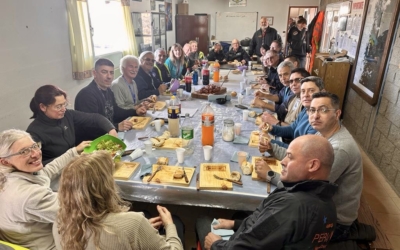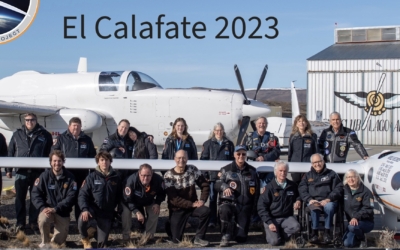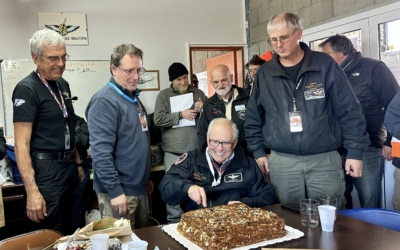To prep the Airbus Perlan Mission II team for a successful Patagonia campaign in 2023 takes an incredible amount of exacting work in very cold conditions. There is no room for error. We’ve done this four previous years and we know to be thorough and meticulous. It might not be set-your-hair-on-fire thrilling, but it is a totally necessary foundation for those awesome accomplishments in the coming weeks. Chief Pilot Jim Payne welcomed the team and set the parameters for the mission.

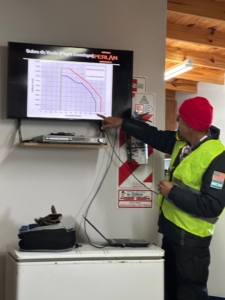
One of the first new things we set up was an IQAir purifier. We have 20 team members in a very small heated space. This year we are requiring N-95 masks in that area due to safety protocols. This post-covid world is not the same as our last trip in 2019. IQAir was a dream to work with. They had a 220v device which would help us keep healthy with extremely tiny filtration – smaller than virus size. It is robust and very quiet.
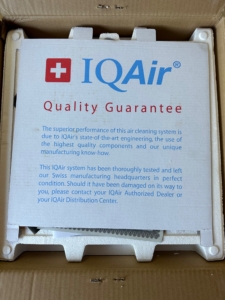
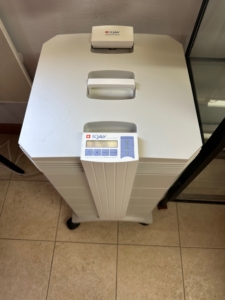
CapCom (Capsule Communication) is the heart of our ground operations. We have 9 computer stations to cover multiple radios, satellite, weather, glider telemetry, balloon telemetry, real-time data analysis, and the Virtual Cockpit.
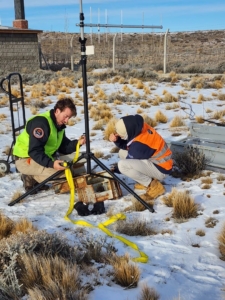
Several antennas need to be assembled and placed on the frozen ground before testing. Our new interns Ivan Altunin and Rodrigo Sanz helped with many components.
This CapCom group composes the “third pilot” role. We can watch trends in oxygen consumption for each pilot, monitor battery useage, fine tune the tracking software, and extremely important compare lift/sink realities with what is forecast. Armistead Sapp, Morgan and Sandra Sandercock were in charge of setting up CapCom.
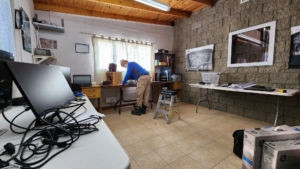
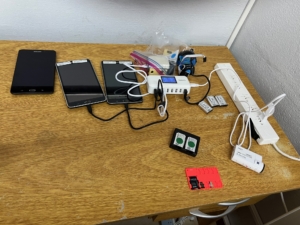
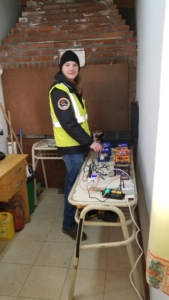
This year we are carrying CubeSats on the Egrett as well as the Perlan 2. Elisa Vasenden is the intern who will be wrangling the CubeSats. We plan to download their data after each flight and make it available online.
 The Perlan2 uses 100% oxygen in our closed loop, CO2 scrubber, rebreather system for each pilot. Miguel Iturmendi is in charge of cleaning and care of the rebreathers. Rodrigo Sanz is helping.
The Perlan2 uses 100% oxygen in our closed loop, CO2 scrubber, rebreather system for each pilot. Miguel Iturmendi is in charge of cleaning and care of the rebreathers. Rodrigo Sanz is helping.
But we have normal (21% oxygen) air in the pressurized cabin. That extremely dry air is used to back-fill any tiny leaks as things shrink in the -70C (-100F) stratospheric conditions above 70,000 feet. Today Jim was at the hangar showing other team members Mike Malis, Alan Murray, and Ivan how the scuba compressor works. Next step is to fill the flight bottle with air. Jim and Rodrigo worked together on that. This is the prequel to a pressurization test before we put the wings on.
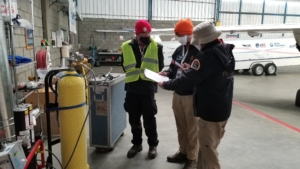

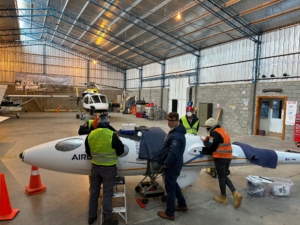

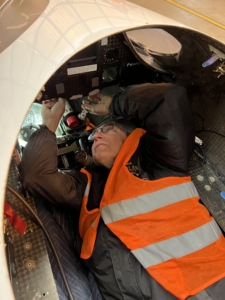 We rolled the fuselage out of the trailer to inspect all the instruments after 11,000 miles of transport since Minden. Mike Malis installed the new S10D; its a repeater for the vario system which will power the new HAWK. Our LX9000 units are the only 2 High Altitude Flight Recorders in the world (that I know of) that are GPS calibrated to 100,000 feet. They could not be replaced. But the S10’s should enable us to be the highest flying HAWK in the world. Thanks to LX and Dr Heinrich Myer for the world class support.
We rolled the fuselage out of the trailer to inspect all the instruments after 11,000 miles of transport since Minden. Mike Malis installed the new S10D; its a repeater for the vario system which will power the new HAWK. Our LX9000 units are the only 2 High Altitude Flight Recorders in the world (that I know of) that are GPS calibrated to 100,000 feet. They could not be replaced. But the S10’s should enable us to be the highest flying HAWK in the world. Thanks to LX and Dr Heinrich Myer for the world class support.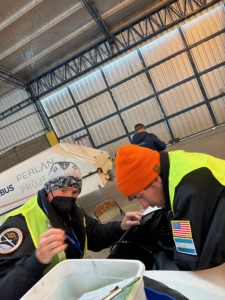
Alan Murray and Ivan Altunin working on instruments.
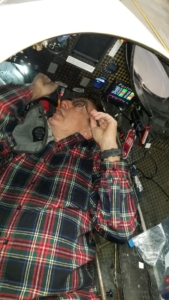
Then we rolled the fuselage outside the metal hangar doors to check satellite reception on other equipment. No anomalies discovered. Thanks to Thales, Iridium, and Videosoft.
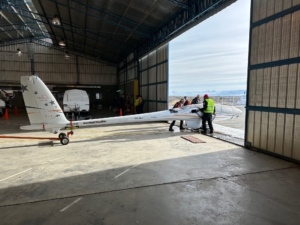
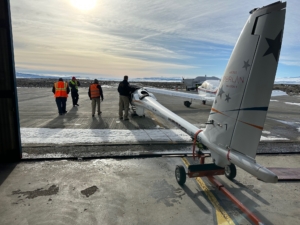
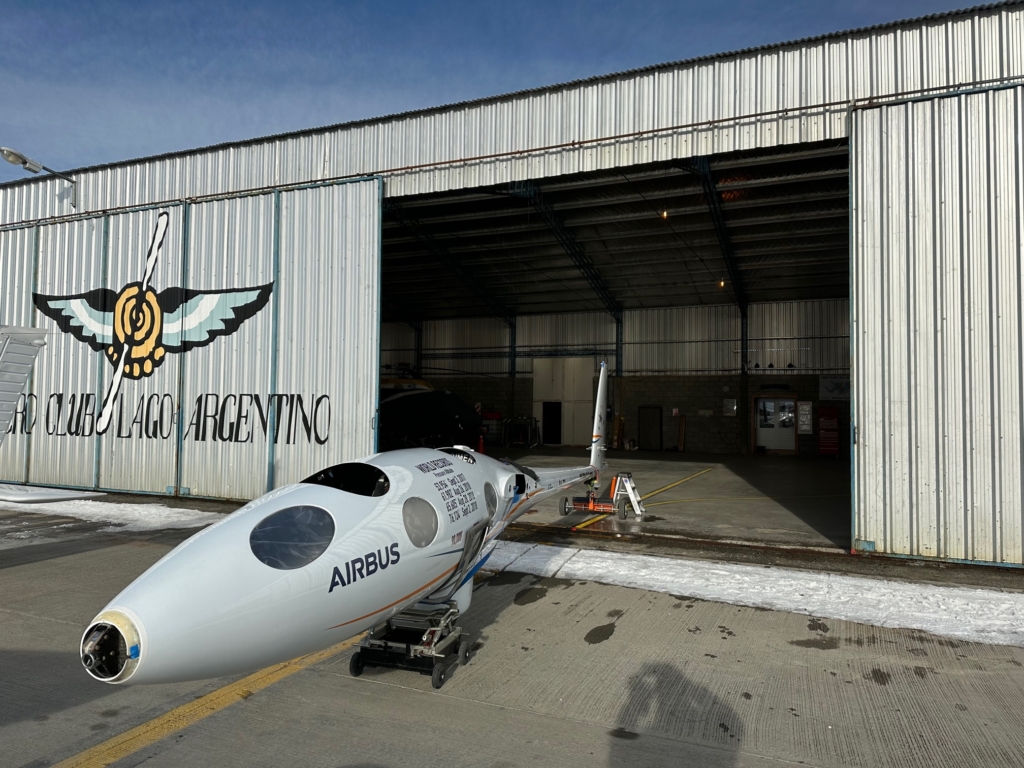
From our 3 Interns to the Chief Pilot everybody on the team is essential and contributes to our safety and success. Check back frequently as we ramp up to soaring in the stratosphere. There will be fresh blogs every 1-2 days.
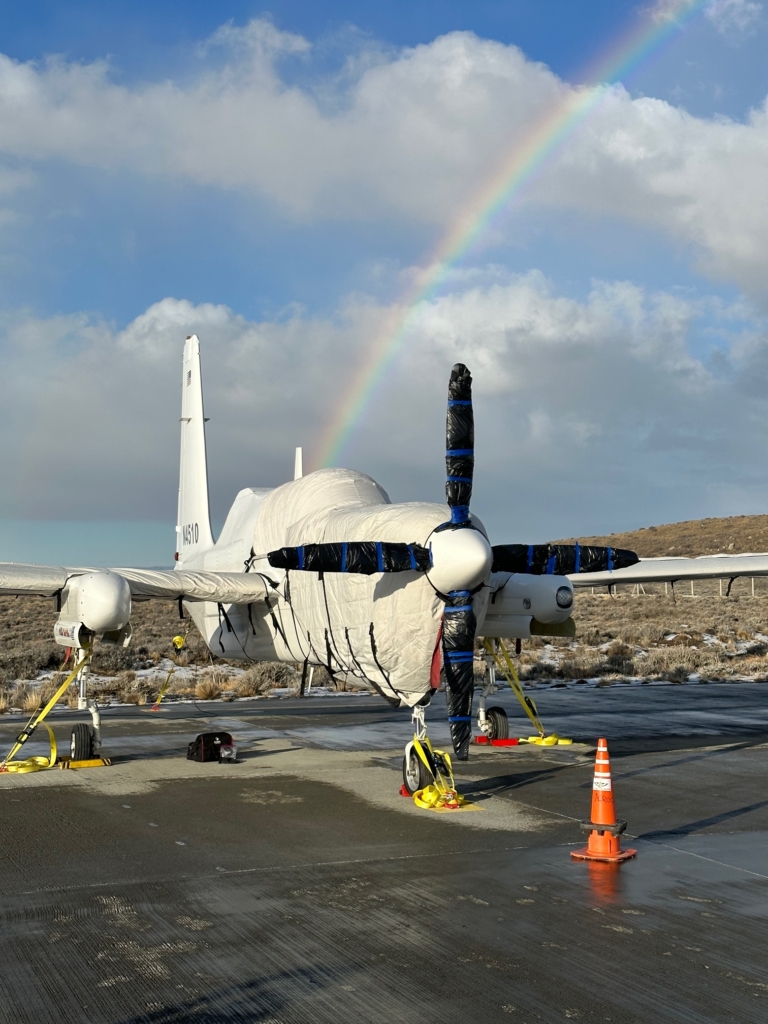
Perlan Soars! Jackie

